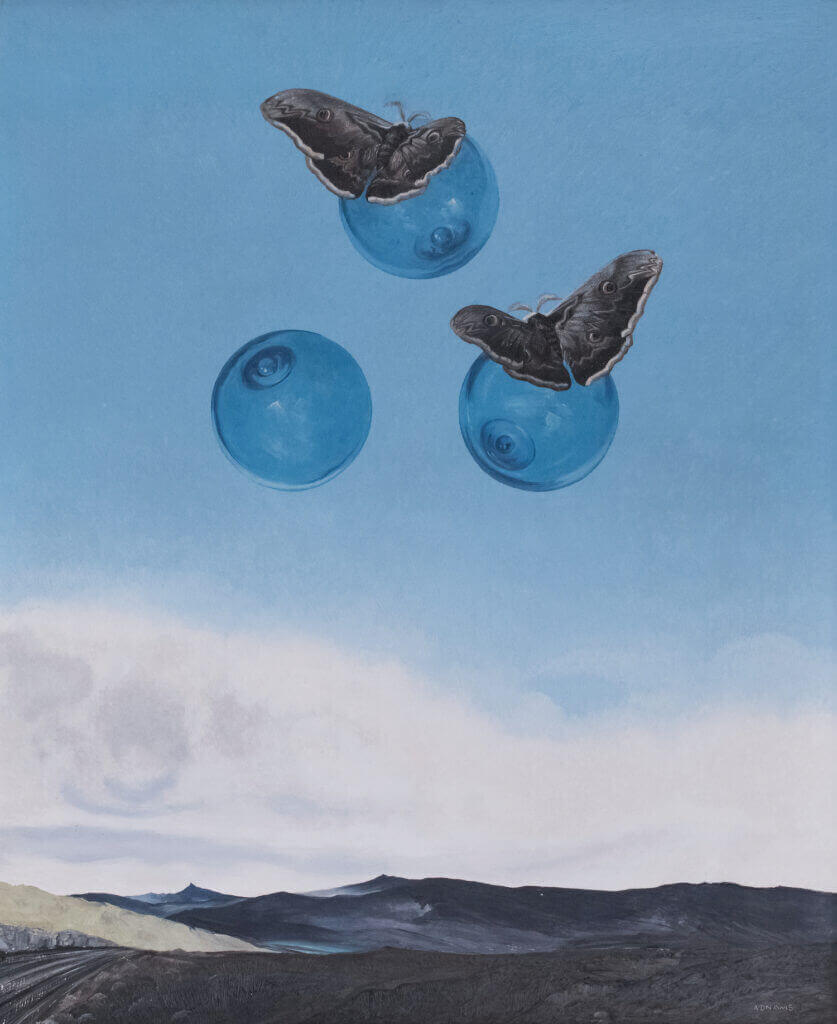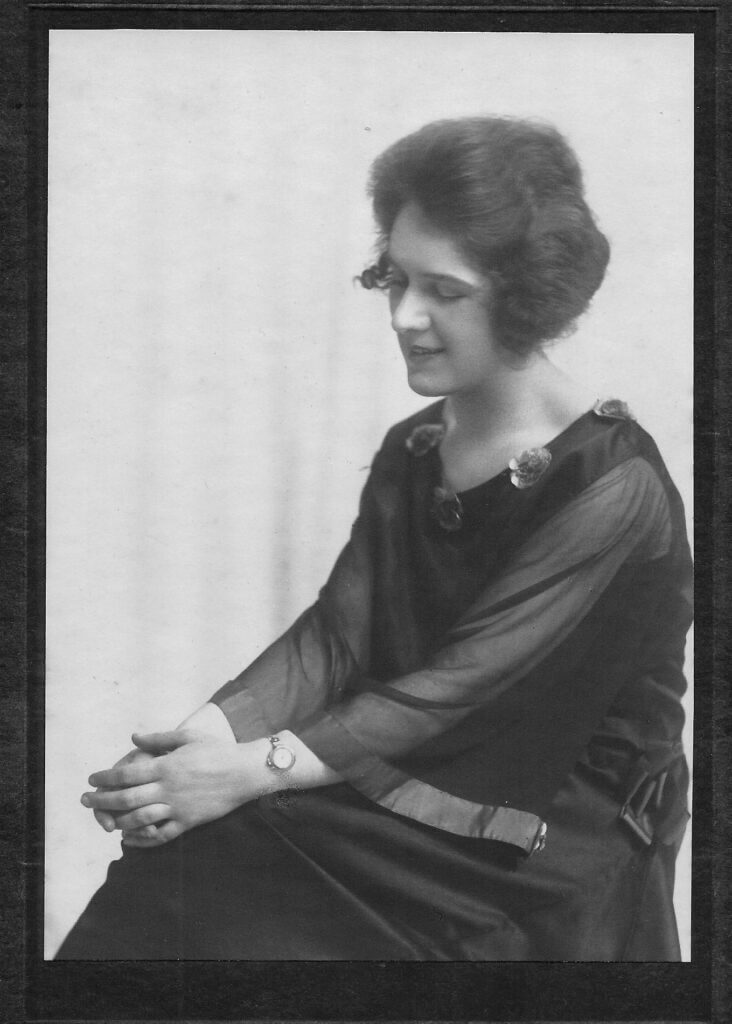Your currently viewing RAW Modern | Switch to RAW Contemporary
Emperor Moths / Thunder On the Left, 1963
Catalogue essay by Blanche Llewellyn
Marion Adnams began to paint in 1937 and she continued until she was forced to stop, losing her eyesight in 1968.
During her career, Adnams forged a reputation as a painter of deeply distinctive and dream-like visions inspired by the Surrealist movement.
In her autobiography, Adnams wrote “In September, I went to Venice. It was wonderful being in Venice, but there was nothing to draw. Or rather, it had all been done already. Venice herself was the finished article and, as such, I could do little with her” but upon seeing René Magritte’s ‘The Voice of Space (La Voix des airs, 1931)’ held in the Solomon R. Guggenheim Foundation, Venice, Adnams found herself inspired again “In October, I painted the Emperor. Tho of these great moths cling to balls of blue glaze, floating in the sky above a landscape which was dark blue and purple with the threat of approaching storm”. In accordance with her uncompromising dedication to recentring women’s experiences and the female gaze, Adnams’ floating balls resemble breasts, a contrast to the more masculinised motifs in Magritte’s painting, of which he wrote: “I caused the iron bells hanging from the necks of our admirable horses to sprout like dangerous plants at the edge of an abyss.”

